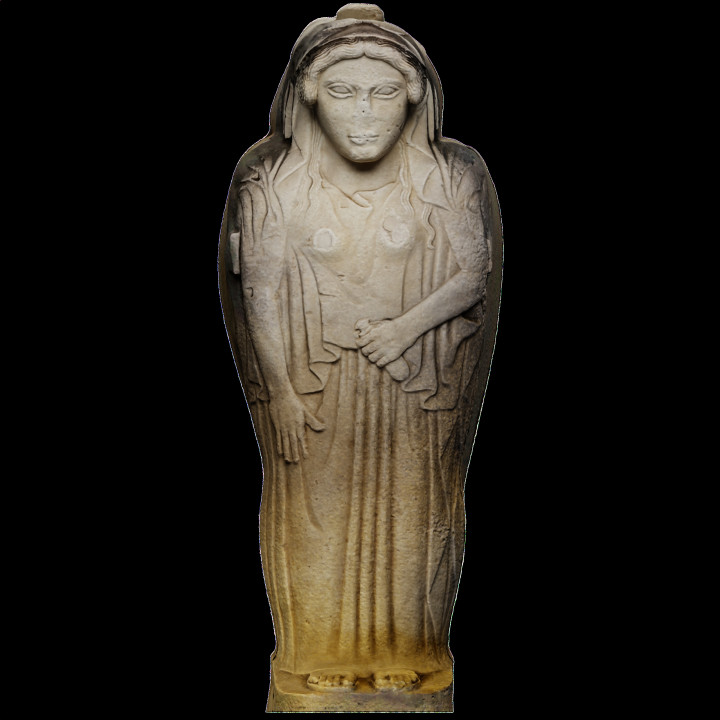
Sarcophagus of Cannita
myminifactory
This is one of the two Sarcophagi of Cannita. In 1695 stone quarry workers by chance discovered a chamber tomb that contained a beautiful anthropoid sarcophagus of Phoenician type. The tomb was discovered in Portella di Mare, a plain that stretches immediately inland of the Phoenician city of Solunto founded on the northwest coast of Sicily and in the vicinity of the small ancient settlement built on Pizzo Cannita, in the lower valley of the Eleuterio river. Only the cover of the sarcophagus was recovered (the case was reconstructed) on which a relief of a female figure with outstretched arms with a band around her head and a smooth long simple dress with short pleated sleeves was carved. Although this is a typically oriental type, the depiction of the face reveals a profound influence of classical Greek art, allowing it to be dated within the first half of the 5* century B.C.The sarcophagus recovered in 1725 in another chamber tomb discovered in the same locality seems instead to be a few decades older. The tomb contained ivory amulets, metal fragments and a black-painted vase which unfortunately went missing. The case was decorated with figurative scenes painted in blue and red, reproduced in an engraving of the Benedictine abbot Michele Del Giudice. Within the frames that bordered the main scene a number of seated female figures were depicted on both sides of the sarcophagus, while on the shorter sides, a male bust and four rearing horses held by a naked youth are portrayed.On the cover it is carved a relief with a female figure in a draped dress, the right arm extended along the side and the left one folded on the chest in the act of embracing an alabastron (ointments jar) in her hand. Probably the cover was painted as well, as demonstrated by the traces of red paint found on the hair at the time of discovery. The coffin was transported by the Prince of Cattolica, Francesco Bonanno to his residence in Misilmeri and was only bought by the Ministry of Education in 1863 and exhibited at the National Museum of Palermo together with the example discovered in 1695.Information about the tombs can be gleaned from the manuscript account of the Benedictine abbot Michele Del Giudice, stored in the Municipal Library of Palermo: these are subterranean rooms carved into the bedrock, quadrangular in shape with a flat roof and an entrance closed by a slab of stone, which is accessed from the east via a corridor (dromos) with steps, a type well known throughout the western Phoenician-Punic world. The two anthropoid sarcophagi, however, are the only specimens found in Sicily to date.
With this file you will be able to print Sarcophagus of Cannita with your 3D printer. Click on the button and save the file on your computer to work, edit or customize your design. You can also find more 3D designs for printers on Sarcophagus of Cannita.
